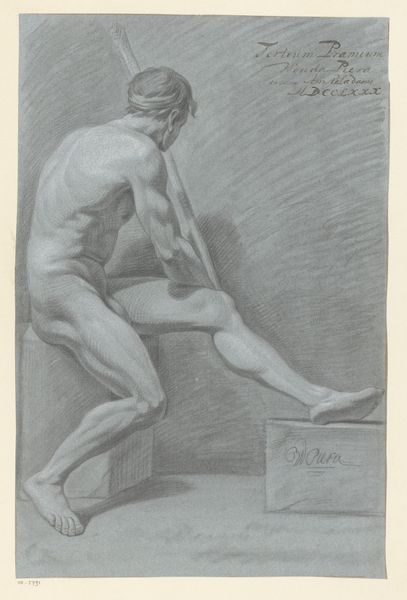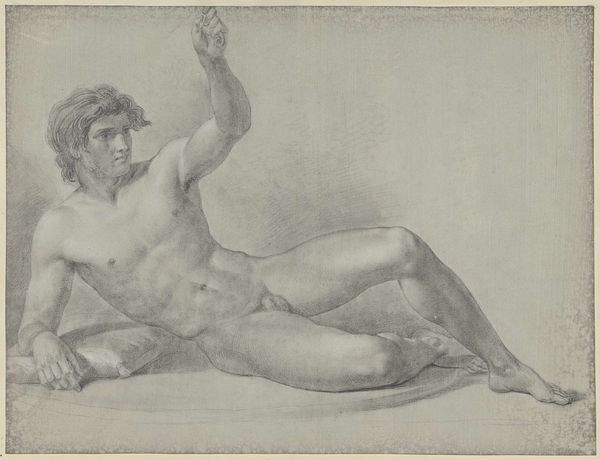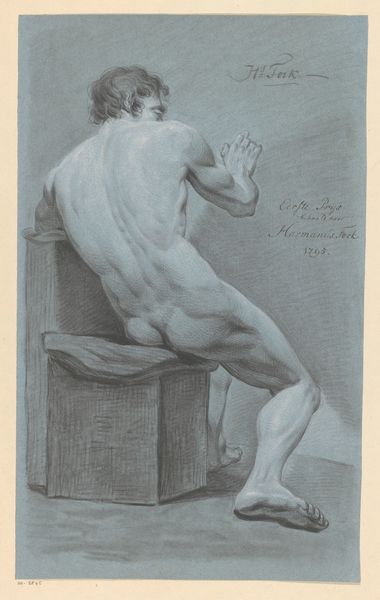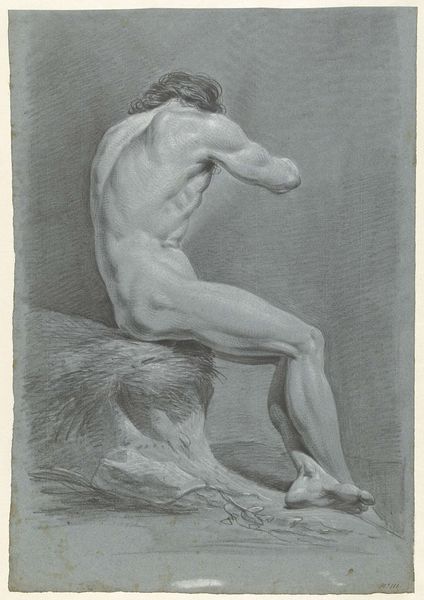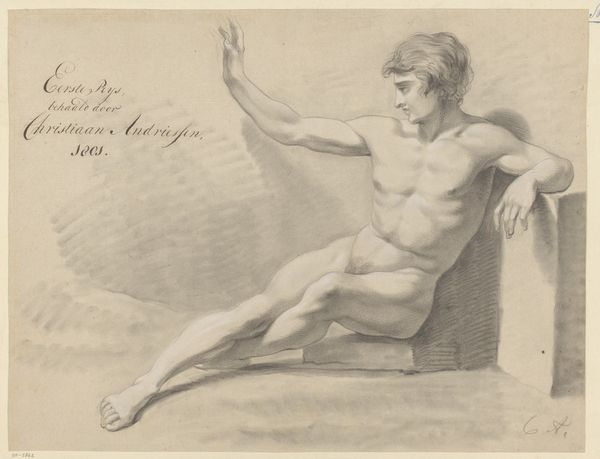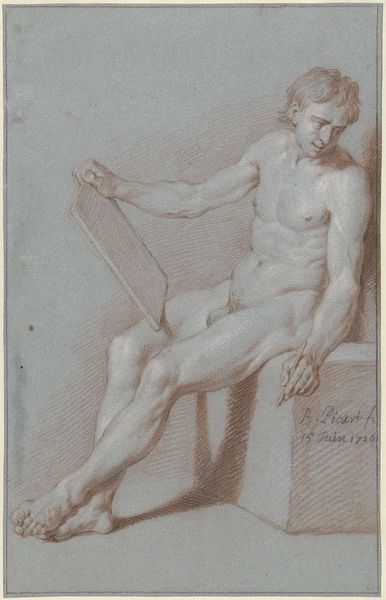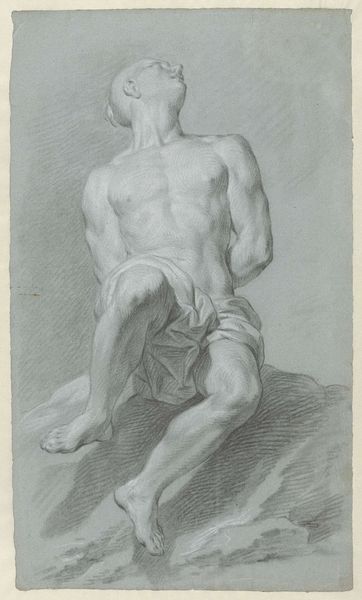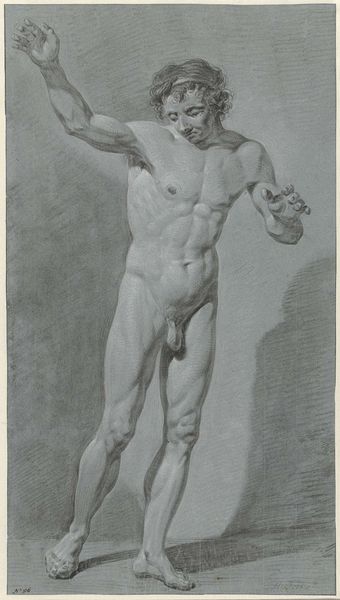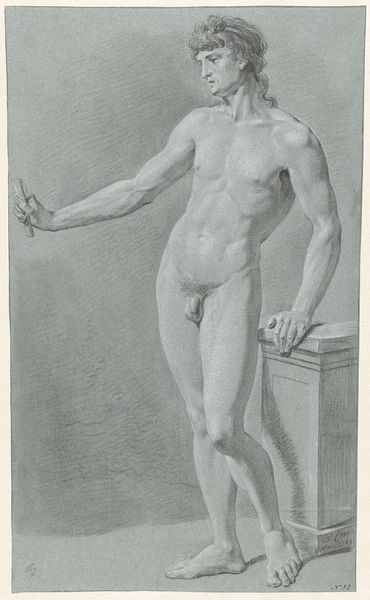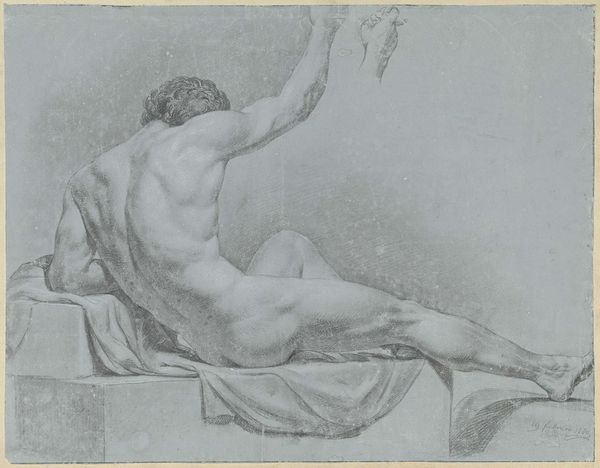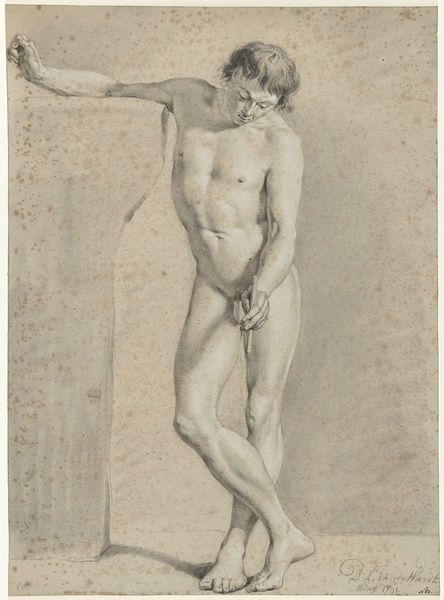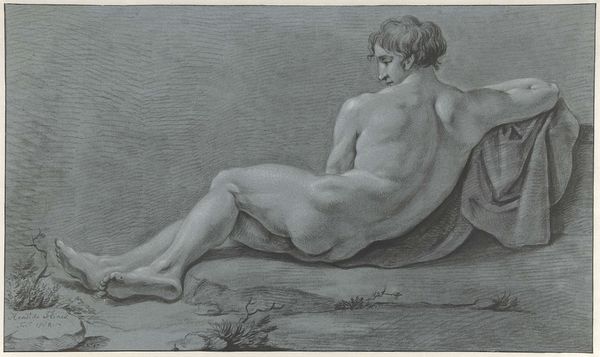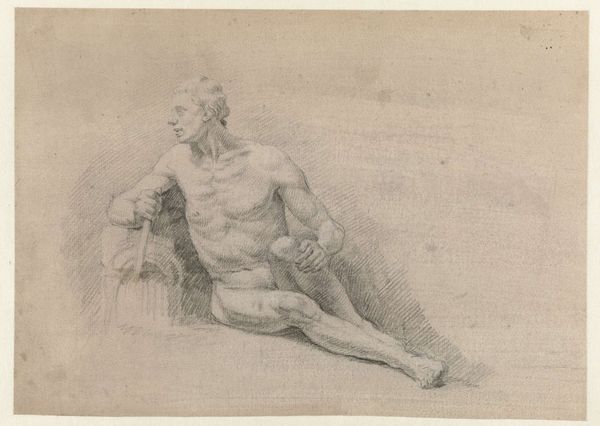
drawing, charcoal
#
drawing
#
neoclacissism
#
landscape
#
charcoal drawing
#
figuration
#
charcoal
#
history-painting
#
academic-art
#
nude
#
portrait art
Dimensions: height 478 mm, width 648 mm
Copyright: Rijks Museum: Open Domain
Editor: Here we have Gerardus de San jr.’s "Zittend mannelijk naakt," created in 1806 using charcoal. I'm struck by the tension in the figure, the way the lines of his body contrast with the rigidity of the cubes he sits on. How do you interpret this work through a formalist lens? Curator: Well, observe first the composition. The artist utilizes a monochromatic palette, compelling us to consider the modulation of tone and shadow to articulate form. What role do you believe the chiaroscuro plays here? Editor: It emphasizes the musculature, creating a dramatic contrast between light and dark that defines the figure’s strength, wouldn’t you agree? Curator: Precisely. And notice the geometric underpinnings. The cubic forms anchor the figure, creating a visual structure. Does the figure’s pose reiterate or disrupt that sense of order? Editor: I’d argue it disrupts it. The man’s diagonal pose and pointing gesture create dynamism, preventing the piece from becoming static. There's an interesting push and pull between the organic form and the geometric shapes. Curator: An astute observation. The success of the piece relies on the artist’s capacity to imbue those formal relationships with expressive potential, while respecting the stylistic and philosophical constraints of Neoclassicism. Have your perspectives shifted on this drawing? Editor: Absolutely. I see now how the artist manipulates line, light, and form to construct meaning and tension beyond the literal depiction of a nude figure. Thank you for showing me how to interpret it beyond the historical and the cultural contexts. Curator: Indeed. Understanding how formal elements interact is crucial to unpacking the depth and intention within any artwork.
Comments
No comments
Be the first to comment and join the conversation on the ultimate creative platform.
